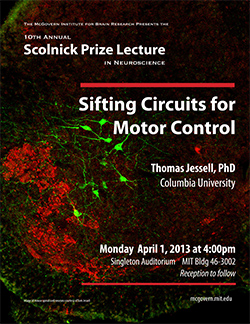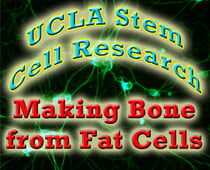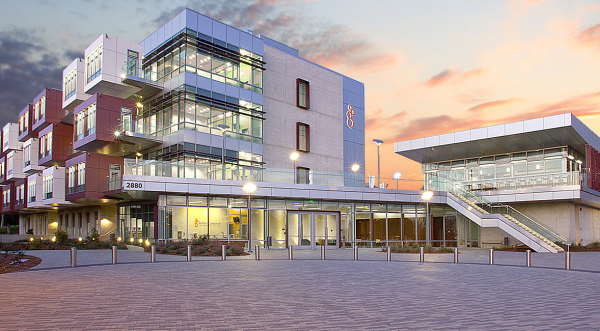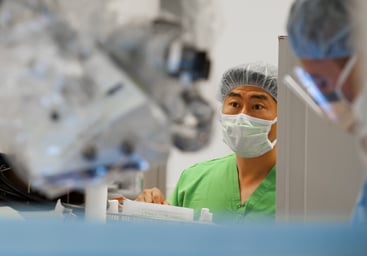Researchers at UCLA believe using the patient’s own cells to create stem cells for therapeutic purposes is the future of medicine. A recently published study by scientists at UCLA demonstrates how specialized proteins change the cellular characteristics of skin cells to create induced pluripotent stem cells. These stem cells have the ability to turn into any cell type within the body. Also at UCLA, a clinical trial which uses the baby’s own blood-forming stem cells to treat the immune deficiency condition ADA-SCID, better known as “bubble baby disease,” was recently awarded a $20M grant from the California Institute for Regenerative Medicine.
Read MoreTags: University of California Los Angeles, Stem cell research, Human Stem Cell, UCLA, Stem Cell, biotech vendor show, Biotechnology trade show
A link between the Zika virus and microcephaly has finally been proven by researchers at the University of California, San Francisco, ending the pervasive question sparked earlier this year.
Read MoreTags: CA, University of California San Francisco, California, SFVS, Stem Cell, UCSF, virus, Neurons, pregnancy, microcephaly, zika
Researchers at the University of Colorado, Boulder have recently discovered information about stem cell division that may change the way we approach regenerative medicine and cancer research. These findings were published as the cover story in Science for its February 5th issue.
Read MoreTags: Stem cell research, University of Colorado Boulder, Stem Cell, CO, Colorado, CU-Boulder, Boulder, Skin regeneration
 Millions of people suffer from allergies nationwide, (up to 30% of Americans, according to the Center for Disease Control), but for most, a healthy immune system and a course of antihistamines is all that is needed for a little relief.
Millions of people suffer from allergies nationwide, (up to 30% of Americans, according to the Center for Disease Control), but for most, a healthy immune system and a course of antihistamines is all that is needed for a little relief.
For others, however, diseases that complicate and degrade the immune system make every microbe and bacteria a potentially fatal nightmare. In recent years, people suffering from immune deficiencies have found some home in stem-cell transplants and other therapies, but their hope is tempered by inherent toxicities and associated side effects.
Read MoreTags: Fred Hutchinson Cancer Research Center, Washington, immunotherapy, Stem cell research, WA, NIH funded Research Projects, Immune System, grants, 2015, BioResearch Product Faire Event, Research Funding, Stem Cell, Seattle, Northwest Region, Hutch, Fred Hutch
Tags: 2014, 2013, University of North Carolina at Chapel Hill, North Carolina, University of North Carolina, Human Stem Cell, Southern, BioResearch Product Faire Event, Research Funding, Stem Cell, Front Line event, NIH, NC, Front Line, laboratory equipment, Chapel Hill, NSF, UNC, laboratory equipment sales, UNC-Chapel Hill
 Dr. Thomas Jessell is a developmental neurobiologist at Columbia University Medical Center and the latest recipient of the Scolnick Prize in Neuroscience, which includes a $100,000 award. In the Jessell Lab in the Hammer Health Sciences Building, researchers study the vertebrate central nervous system to understand how neurons become encoded at the embryonic level, particularly in the spinal cord. The Scolnick Prize singles out Jessell's work for identifying signaling molecules and transcriptional code that establish a linkage between functional circuitry and motor behavior. Also a member of Columbia's Motor Neuron Center, which is dedicated to the study of motor neuron diseases like ALS, Dr. Jessell is a faculty member in the Department of Biochemistry and Molecular Biophysics, a Howard Hughes Medical Institute investigator, and part of the larger Columbia Neuroscience interdisciplinary research community. He will travel to Boston in April to accept the prize and deliver a lecture (see image at right). The Scolnick Prize is given out by the McGovern Institute for Brain Research at MIT. According to McGovern chairman Robert Desimone, from a recent CUMC press release:
Dr. Thomas Jessell is a developmental neurobiologist at Columbia University Medical Center and the latest recipient of the Scolnick Prize in Neuroscience, which includes a $100,000 award. In the Jessell Lab in the Hammer Health Sciences Building, researchers study the vertebrate central nervous system to understand how neurons become encoded at the embryonic level, particularly in the spinal cord. The Scolnick Prize singles out Jessell's work for identifying signaling molecules and transcriptional code that establish a linkage between functional circuitry and motor behavior. Also a member of Columbia's Motor Neuron Center, which is dedicated to the study of motor neuron diseases like ALS, Dr. Jessell is a faculty member in the Department of Biochemistry and Molecular Biophysics, a Howard Hughes Medical Institute investigator, and part of the larger Columbia Neuroscience interdisciplinary research community. He will travel to Boston in April to accept the prize and deliver a lecture (see image at right). The Scolnick Prize is given out by the McGovern Institute for Brain Research at MIT. According to McGovern chairman Robert Desimone, from a recent CUMC press release:
Tags: 2014, 2013, Northeast, Scolnick Prize, New York, Columbia University, Neuroscience, Columbia, BioResearch Product Faire Event, Research, Stem Cell, New York City, Columbia University Medical Center, Northeast Region, lab supplier, NYColumbia University
A microscopic worm by the name of Schistosoma mansoni has been long credited with a long lifespan and an uncanny knack for regeneration. Thanks to recent research from the University of Illinois at Urbana-Champaign, the worm’s secret is out: it utilizes adult stem cells to restore and replace itself at will.
Tags: 2014, Midwest, 2013, University of Illinois, University of Illinois Urbana-Champaign, Urbana-Champaign, Illinois, UIUrbana, BioResearch Product Faire Event, Stem Cell, IL, parasite, laboratory product, UI Urbana
Tags: CA, University of California San Diego, Stem cell research, New research facilities, new science wet labs, Southwest, California, 2012, San Diego, UCSD research, UCSD, Stem Cell, La Jolla, Biotechnology Vendor Showcase, new construction
 Bone marrow was the first stem cell source to be widely used in clinical transplant surgery to replace damaged bone as a result of injury or chemotherapy. Unfortunately, bone marrow grafts are painful, and the appropriate donor is not always available when the need is there. Now research at the University of California Los Angeles' Broad Center of Regenerative Medicine has demonstrated successfully that stem cells from the patient's own fat (i.e. adipose tissue) can be made usable for bone damage treatment. Bone marrow is, after all, the soft, fatty tissue inside your bones that contains immature cells (aka stem cells) that give rise to all of your blood cells. So looking to fatty tissue from another part of the body to produce mesenchymal cells has made sense all along, though it has taken the efforts of several UCLA teams to show how it can be done in an animal model.
Bone marrow was the first stem cell source to be widely used in clinical transplant surgery to replace damaged bone as a result of injury or chemotherapy. Unfortunately, bone marrow grafts are painful, and the appropriate donor is not always available when the need is there. Now research at the University of California Los Angeles' Broad Center of Regenerative Medicine has demonstrated successfully that stem cells from the patient's own fat (i.e. adipose tissue) can be made usable for bone damage treatment. Bone marrow is, after all, the soft, fatty tissue inside your bones that contains immature cells (aka stem cells) that give rise to all of your blood cells. So looking to fatty tissue from another part of the body to produce mesenchymal cells has made sense all along, though it has taken the efforts of several UCLA teams to show how it can be done in an animal model.
Tags: University of California Los Angeles, Stem cell research, cancer research, Southwest, California, Los Angeles, UCLA, Research, Stem Cell, Biotechnology Vendor Showcase, BVS, science solution



